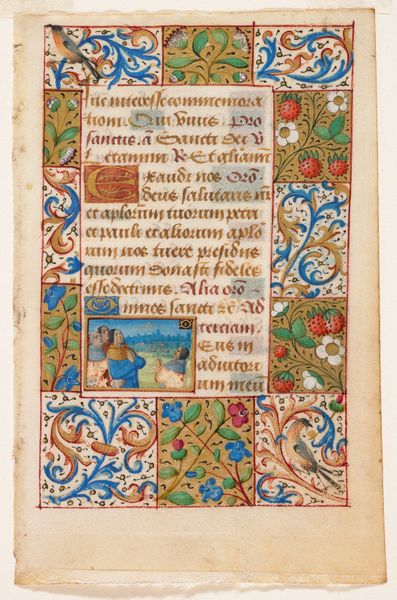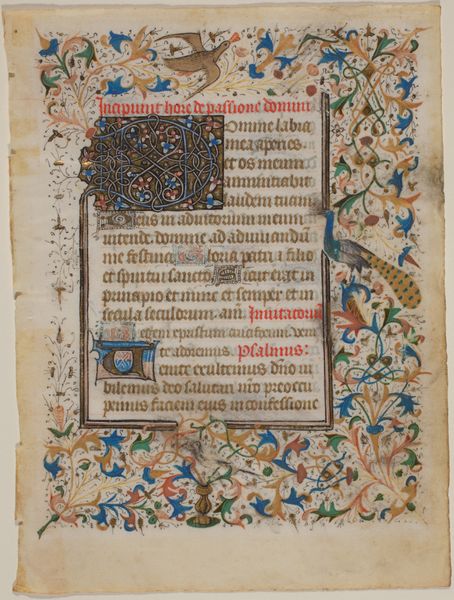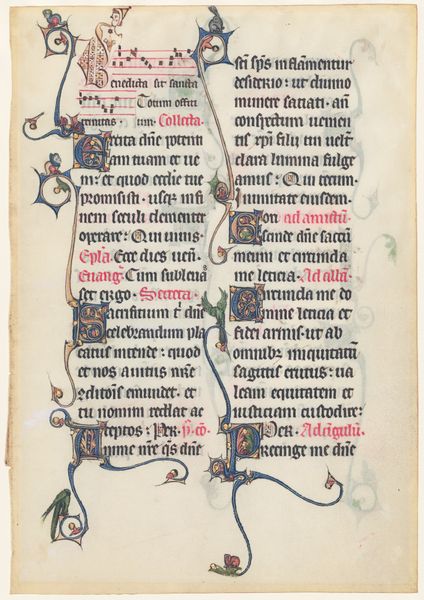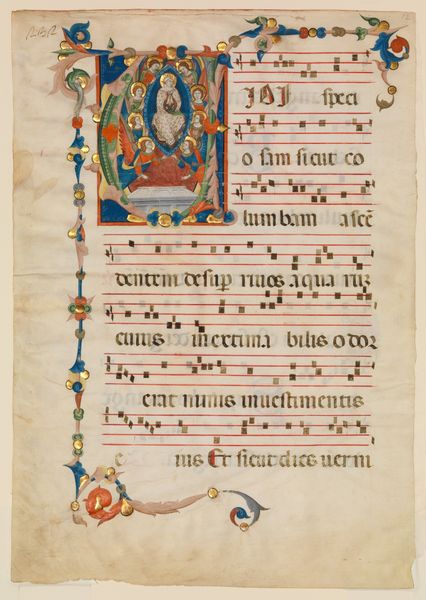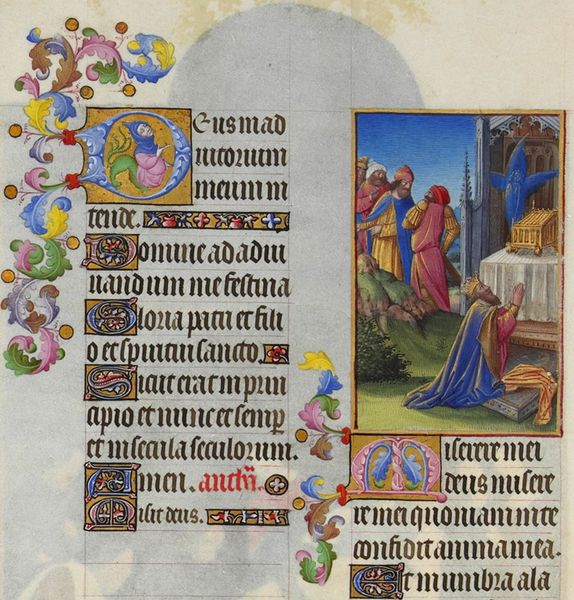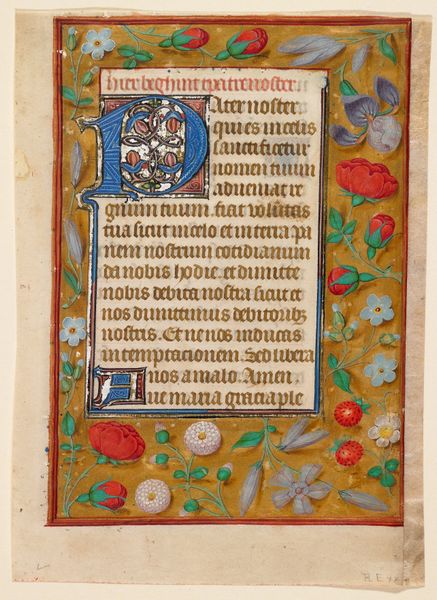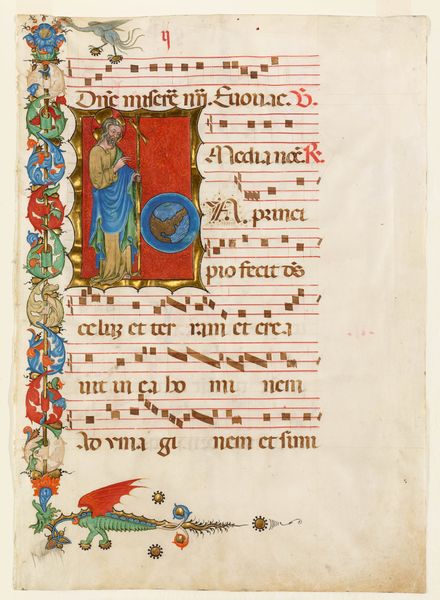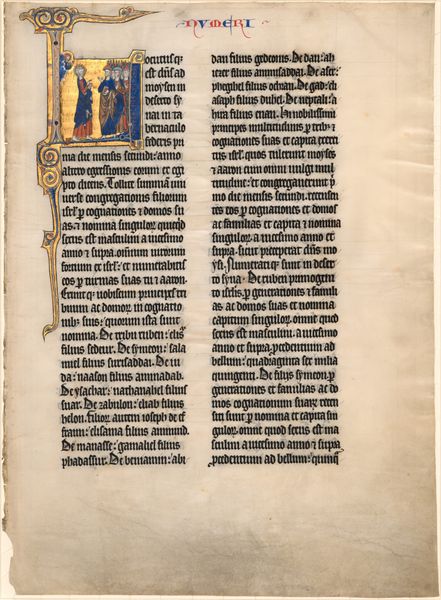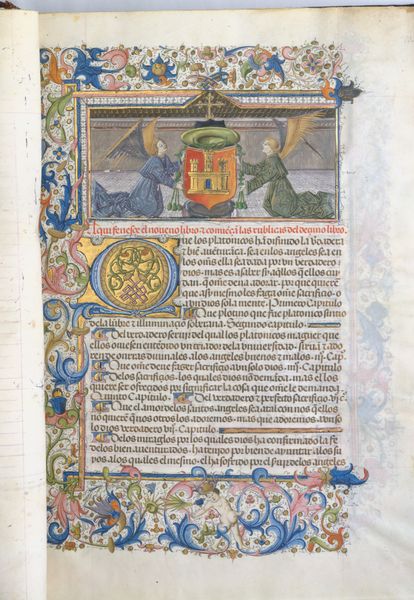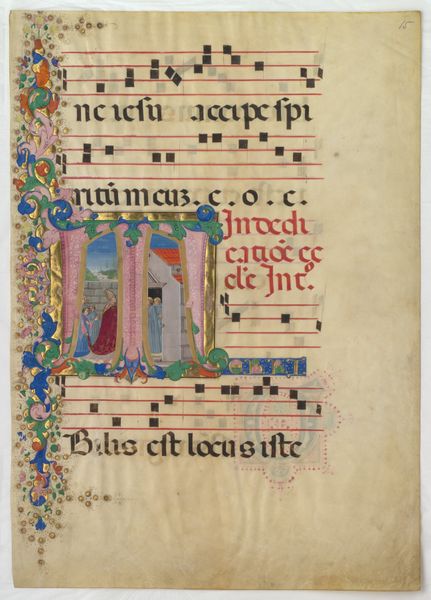
painting, paper, ink
#
medieval
#
narrative-art
#
painting
#
paper
#
ink
#
miniature
Dimensions: 5 1/2 × 4 in. (13.97 × 10.16 cm) (sight)
Copyright: Public Domain
Curator: Right, let's immerse ourselves in this miniature marvel, "Ave Maria," created around the 15th century. It's currently housed here at the Minneapolis Institute of Art. The work is paper-based with ink comprising this tiny illuminated script. What strikes you first? Editor: The texture! Look how the vellum itself is a character. It has this aged, almost wrinkled quality that shouts of time, wear and devotional purpose, you know? Someone labored long and hard to inscribe this, so their relationship to time and materials feels key here. Curator: Absolutely. And the text, nestled in those initial 'G's – how do they even do that? These kinds of medieval miniatures weren't just visual; they were acts of deep contemplation and precision by monastic practitioners or artisans, meant to accompany prayer, reflection, and worship. Editor: Monastic, or professionalized workshops maybe. That interplay between spirituality and craft— the literal gilding— it's mesmerizing! What inks, what paper treatments afforded this resilience, right? How often was it copied? The original manuscript itself may not even exist anymore. Instead, all of those unknown skilled hands devoted to production were probably the artists involved. Curator: Good point; it’s often attributed to an anonymous artist. And you’re right, that's partly because so much of medieval art was functional and collective rather than focused on individual authorship. As for symbolism? Well, “Ave Maria,” as you might know, is a classic address to the Virgin Mary. So these repeated phrases in these prayers are visual testaments of Mary. Each page in the book meant to induce piety by repeatedly invoking this. Editor: Exactly. This object begs us to reconsider the social dynamics surrounding material production—who benefits, who controls access, and how collective labor underpins perceived "masterpieces" by one "artist." What labor went into maintaining these objects or how was the surplus appropriated? Curator: Very thought provoking! Well, looking at it now, after having talked through all this, the fragility and strength… both aspects linger. The illuminations almost vibrate against the aged page. Editor: For me, the ink and its dance with light… that relationship holds the secret. It reminds me of the daily work put into devotional practice of that period. The "anonymous" hands which crafted these beautiful objects is a true, and unfortunately unrecognized, marvel.
Comments
minneapolisinstituteofart almost 2 years ago
⋮
This leaf probably comes from a prayer book produced in France in the 1400s. It contains several appeals the Virgin Mary. Before or after each one is the expression “Ave Maria,” meaning “Hail Mary.”
Join the conversation
Join millions of artists and users on Artera today and experience the ultimate creative platform.
